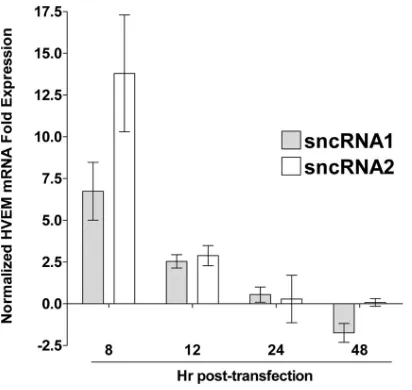Interactions between Herpesvirus Entry Mediator (TNFRSF14) and Latency-Associated Transcript during Herpes Simplex Virus 1 Latency
Full text
Figure




Related documents
FIG. Sensitivity of 10 NSI R5 HIV-1 isolates to AOP-RANTES inhibition. PBMC were exposed to each virus in the presence of various concentrations of AOP- RANTES. Supernatant samples
Here, we demonstrate that, similar to EBV EBNA2 and cel- lular NIC, KSHV RTA activates cellular CD21 and CD23a gene expression through their RBP-J binding sites, resulting in
Abstract: During the 1940s and early 1950s radio astronomers from a number of nations used observations of total and partial solar eclipses to investigate the positions
Analysis of latently infected human trigeminal ganglia for 66-pk expression by reverse tran- scriptase-dependent nested PCR, including DNA sequence analysis, in situ hybridization,
In vitro assembly of virus-like particles with Rous sarcoma virus Gag deletion mutants: identification of the p10 domain as a morphological determinant in the formation of
In predicting urinary tract infection, Leukocyte esterase and nitrites has a combined sensitivity of 82% and negative predictive value of 83.3%.. In predicting urinary
4.12 Analysis on effect of Bibliotherapy on different aspects of stress among children at selected
Sucrose density gradient analyses of poliovirus capsid-related particles were conducted with extracts of cells that had been coinfected with the mutant P1-expressing recom-
